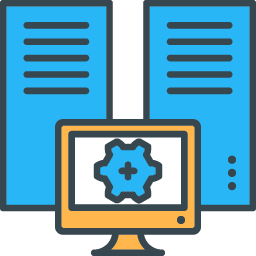Solutions
We provides a wide range of cutting-edge IT solutions
In the dynamic landscape of the shipping industry, modern challenges require innovative solutions. From cybersecurity threats to legacy systems integration, maritime enterprises face a multitude of obstacles that demand proactive measures and strategic initiatives.

Cybersecurity Threats
As digitalization advances in the shipping industry, cyber threats grow more significant, necessitating stronger defenses. Technological progress introduces new vulnerabilities, leading to severe repercussions from ransomware attacks and data breaches. The interconnectedness of vessels via IoT and satellite communications expands the attack surface for cybercriminals. Thus, safeguarding data and infrastructure is crucial for shipping companies. By adopting robust cybersecurity measures like encryption, intrusion detection systems, and employee training, maritime enterprises can mitigate cyber risks and maintain operational trust and integrity.

Legacy Systems Integration
Transitioning from legacy systems to modern IT infrastructures is challenging for shipping companies due to accumulated disparate systems, causing interoperability issues and inefficiencies. Successful integration requires careful planning, meticulous testing, and strategic investments to ensure minimal disruption. Despite the complexity, modernizing IT infrastructures offers significant benefits, including enhanced innovation, streamlined workflows, and improved departmental collaboration. Utilizing cloud-based solutions and SaaS platforms enables maritime enterprises to future-proof operations, adapting to technological advancements with greater agility and scalability.

Data Management
In the maritime sector, data is a valuable yet challenging asset. The surge of sensors and onboard systems generates vast data needing robust management for actionable insights. Effective data handling—from collection and storage to analysis and visualization—is crucial. Ensuring data quality, integrity, and security is vital, especially with regulatory and privacy concerns. Advanced solutions like data lakes, analytics platforms, and governance frameworks help shipping companies optimize routes, predict maintenance, and improve services. Data-driven decision-making is essential for competitiveness in today's maritime industry.

Regulatory Compliance
Shipping companies face perennial challenges due to complex global regulations. Compliance with international maritime conventions and regional environmental protocols is critical to avoid penalties, reputational damage, and operational disruptions. Implementing robust compliance management systems, using advanced software solutions, automation tools, and regulatory intelligence platforms, helps streamline processes and mitigate risks. Proactive engagement with regulatory authorities, industry associations, and legal experts offers valuable insights for navigating regulatory requirements. Prioritizing regulatory compliance ensures safety, environmental stewardship, and corporate responsibility, enabling continuous operations in a highly regulated industry.

Connectivity and Communication
In maritime operations, seamless connectivity and communication are essential for efficiency and safety. Reliable, high-speed connectivity enables real-time data exchange through satellite communications, IoT sensors, and maritime broadband systems, optimizing workflows and decision-making. Cloud-based tools and unified communication platforms enhance collaboration among dispersed teams, fostering teamwork and information sharing. By investing in robust connectivity infrastructure and innovative solutions, shipping companies can achieve operational agility, responsiveness, and efficiency, gaining a competitive edge in the dynamic maritime industry.

Remote Monitoring and Maintenance
Remote monitoring and maintenance are essential for modern maritime operations, ensuring reliability and minimizing downtime. Traditional scheduled inspections and reactive repairs are insufficient. By using IoT sensors, predictive analytics, and remote diagnostics, shipping companies can proactively monitor equipment health, identify issues early, and schedule maintenance based on actual conditions. Digital twins and augmented reality allow for virtual inspections and precise remote maintenance. Integrating these technologies enhances asset reliability, extends equipment lifespan, and reduces maintenance costs, ultimately optimizing operational efficiency and ensuring uninterrupted maritime operations.

Supply Chain Visibility
End-to-end visibility in the maritime supply chain is crucial for efficient global trade. Transparent tracking from loading to final destination ensures timely deliveries and resource optimization. Advanced technologies like IoT, RFID, and satellite communications provide deep insights into cargo and vessel status. Real-time data and predictive analytics help anticipate issues, optimize routes, and enhance resilience. Collaboration among supply chain partners streamlines processes, reduces costs, and improves customer experiences. Prioritizing visibility as a strategic goal gives maritime enterprises a competitive edge, fostering innovation and value creation across the logistics ecosystem.

Adoption of Emerging Technologies
Embracing emerging technologies promises to revolutionize the maritime industry with enhanced efficiency, safety, and sustainability. Innovations like AI, IoT, blockchain, and digital twins offer transformative benefits. AI optimizes routes, predicts failures, and improves decisions, boosting efficiency and cost savings. IoT sensors enable real-time monitoring of cargo, fuel, and environmental conditions, aiding data-driven decisions, and risk mitigation. Blockchain ensures secure, transparent transactions, streamlining trade documentation and reducing fraud. Successful adoption requires organizational readiness, talent development, and strategic partnerships. Investing in R&D, fostering innovation, and collaborating with stakeholders will unlock these technologies' full potential for sustainable growth and operational excellence.

Environmental Sustainability
Facing escalating environmental concerns and regulatory pressures, the maritime industry must adopt sustainable practices. Reducing carbon emissions, mitigating marine pollution, and using alternative fuels like LNG, hydrogen, and biofuels are crucial. Implementing energy-efficient technologies, such as shore power and hybrid propulsion systems, can enhance environmental performance and reduce costs. Sustainable port infrastructure, waste management, and ballast water treatment are vital. Promoting environmental stewardship and corporate social responsibility fosters innovation, attracts investment, and boosts brand reputation. Integrating sustainability into business models helps shipping companies meet regulations and achieve competitive differentiation, resilience, and long-term value.

Human Factors
In maritime operations, human factors are pivotal despite technological advancements. Seafarers' roles in navigation and machinery upkeep ensure vessel efficiency and safety. Prioritizing crew training, education, and welfare is crucial for safety, error reduction, and crew well-being. Supporting diversity, inclusion, and professional growth boosts morale and retention. Beyond onboard tasks, shore-based and logistics personnel are vital. Continuous training, collaboration, and digital integration enhance organizational resilience. Recognizing human centrality and investing in personnel cultivates excellence, innovation, and sustainability, fostering long-term success in the complex maritime industry.
How we can help:
Cysoft offers a comprehensive suite of tools tailored to addressing the IT challenges faced by the modern shipping industry. From fleet management optimization to smooth logistics facilitation and operational continuity, we have you covered.
Explore our solutions:
Explore our solutions:
Addressing the unique needs of shipping companies
Our team remains committed to supporting your digital transformation efforts and helping you harness the full potential of technology to drive growth and success.
